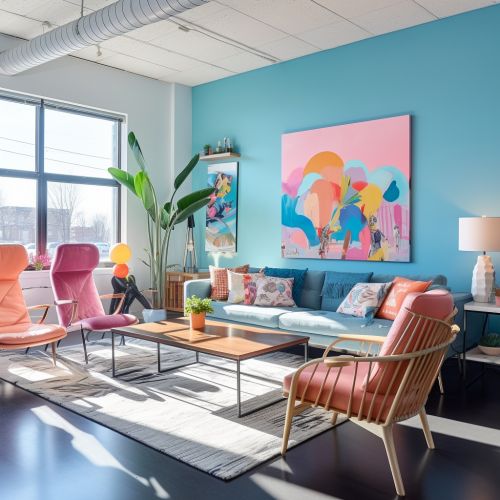Creativity in the Workplace
Introduction
Creativity in the workplace is a vital aspect of modern business. It involves the generation of new ideas and the ability to perceive the world in new ways, find hidden patterns, make connections between seemingly unrelated phenomena, and generate solutions. Creativity is often associated with the arts, but it is essential in many other areas such as business, science, and technology. The workplace is a common setting where creativity is required, as it can lead to innovation and increased productivity.


The Importance of Creativity in the Workplace
Creativity in the workplace is increasingly recognized as a key driver of organizational success. It can lead to innovation, which is a crucial factor in the competitive global market. Companies that foster creativity may see benefits such as improved employee satisfaction and retention, increased productivity, and the ability to solve problems more effectively.
Creativity can also lead to the development of new products or services, the improvement of existing ones, and the creation of new business models. It can also foster a culture of continuous learning and improvement, which can help organizations adapt to changes in the market or industry.
Understanding Creativity
Creativity is often misunderstood as a trait that only certain individuals possess. However, research in the field of psychology suggests that everyone has the potential to be creative. Creativity is not just about coming up with new ideas; it also involves the ability to evaluate these ideas and implement them effectively.
Creativity can be influenced by a variety of factors, including personality traits, cognitive abilities, motivational factors, and environmental influences. It is also a process that can be nurtured and developed.
Fostering Creativity in the Workplace
There are several strategies that organizations can use to foster creativity in the workplace. These include creating a supportive environment, providing opportunities for learning and development, encouraging diversity, and promoting a culture of risk-taking and experimentation.
Creating a Supportive Environment
A supportive environment is one that encourages employees to express their ideas without fear of criticism or rejection. This can be achieved by promoting open communication, providing constructive feedback, and recognizing and rewarding creative efforts.
Providing Opportunities for Learning and Development
Continuous learning and development can stimulate creativity by exposing employees to new ideas and perspectives. This can be facilitated through training programs, workshops, and other learning opportunities.
Encouraging Diversity
Diversity can enhance creativity by bringing together individuals with different backgrounds, experiences, and perspectives. This can lead to a wider range of ideas and solutions.
Promoting a Culture of Risk-Taking and Experimentation
A culture that encourages risk-taking and experimentation can foster creativity by allowing employees to explore new ideas and approaches. This involves accepting that failure is a part of the creative process and learning from it.
Challenges in Fostering Creativity
While creativity is widely recognized as important, fostering it in the workplace can be challenging. Some common challenges include resistance to change, lack of resources, and organizational structures and policies that may inhibit creativity.
Resistance to Change
Change can be uncomfortable and may be met with resistance. This can be a barrier to creativity, as it often involves challenging the status quo and introducing new ways of doing things.
Lack of Resources
Creativity can be resource-intensive, requiring time, money, and other resources. Lack of these resources can inhibit creativity.
Organizational Structures and Policies
Certain organizational structures and policies may inhibit creativity. For example, a hierarchical structure may discourage employees from expressing their ideas, while rigid policies and procedures may limit the ability to experiment and take risks.
Conclusion
Creativity in the workplace is a complex phenomenon that involves a variety of factors and processes. It is a crucial aspect of modern business that can lead to innovation, increased productivity, and organizational success. While fostering creativity can be challenging, it is possible with the right strategies and a supportive environment.
